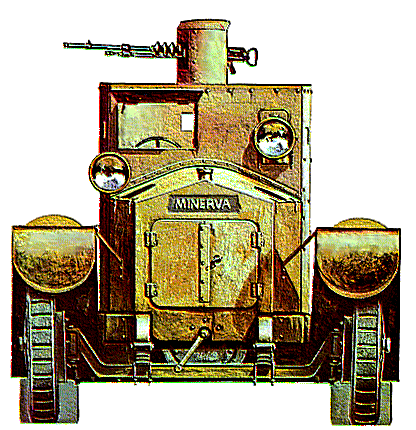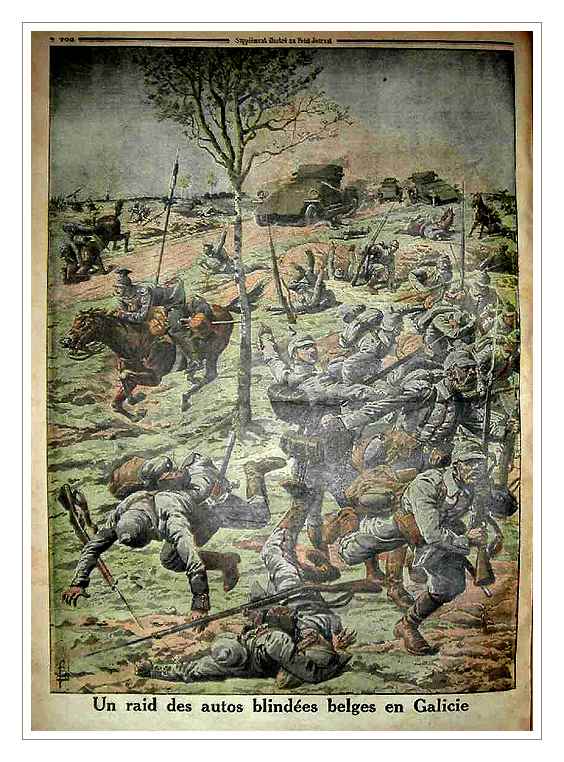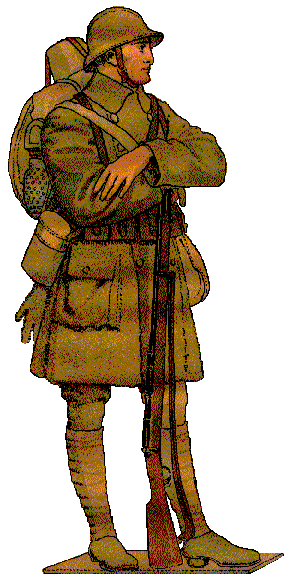|
|
|

Belgium National Anthem
These armored vehicles were used for reconnaissance, long distance messaging, and for carrying out raids, and small scale engagements. Circumstances dictated that the small, outnumbered Belgian Army use these highly mobile armored cars in guerrilla style hit-and-run engagements against the besieging Imperial German army. Not only were they quite effective in conducting raids, blowing bridges and delivering messages to exposed positions, they were extremely photogenic as well, a news editors dream. The British press, playing up the 'Brave Little Belgium' angle in newspapers and magazines, published many photos of Belgian armored cars in and around Antwerp.
|
||
The Russian military attached to the Belgian armed forces, suggested that the Belgian's armored car force, could be of use on the Eastern Front. Following protocol, Czar Nicholas made an official request to King Albert of the Belgians. It was decided to send a force of several hundred Belgians, and the Morse armored motor-cars to Russia. Since Belgium and Russia were co-belligerents and not official allies, for legal reasons the Belgian soldiers were to be considered as volunteers in the Russian army. |
||
 |
||
It was in Galacia that the Belgian Expeditionary Corps, first seen action. In an effective maneuver with the armored cars, and coordinated artillery attacks, to routed the entrenched soldiers, of the Austrian and German armies. |
||
 |
||
The Belgian armored car force was then recalled to Belgium, but had a difficult time returning home. The trip back to Archangel being unfeasible, the Belgians, much like the Czech Legion, had to follow the Trans-Siberian railway, they then crossed northern China, and ultimately arrived in Vladivostok. On April 18th, 1918 they boarded an American vessel, the SS Sheridan and sailed to San Francisco. From there they traveled on a much acclaimed, and widely publicized trip through the United States, and sailed from New York on June 15th 1918, finally reaching Paris two weeks later. They were disbanded shortly afterwards. The last member who belonged to the Belgian Expeditionary Corps in Russia, died in 1992. |
||
 |
||